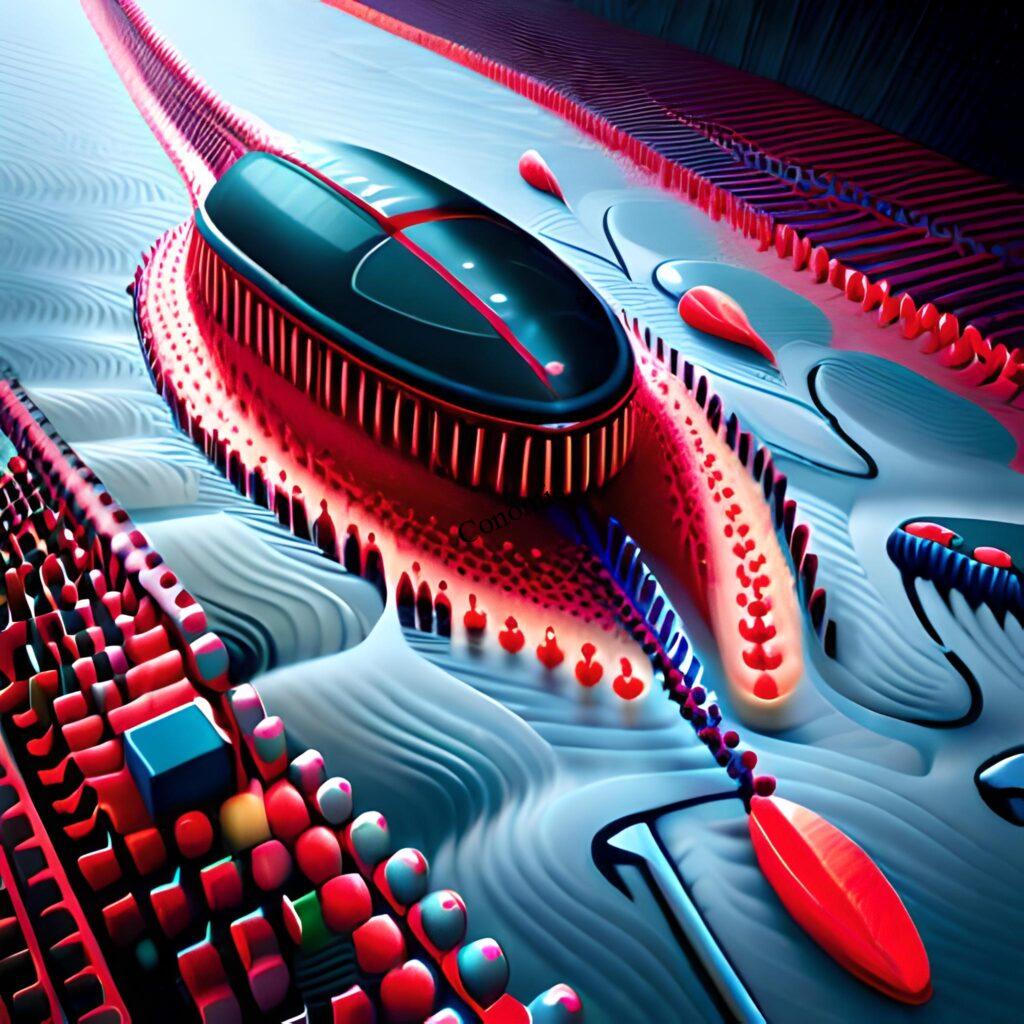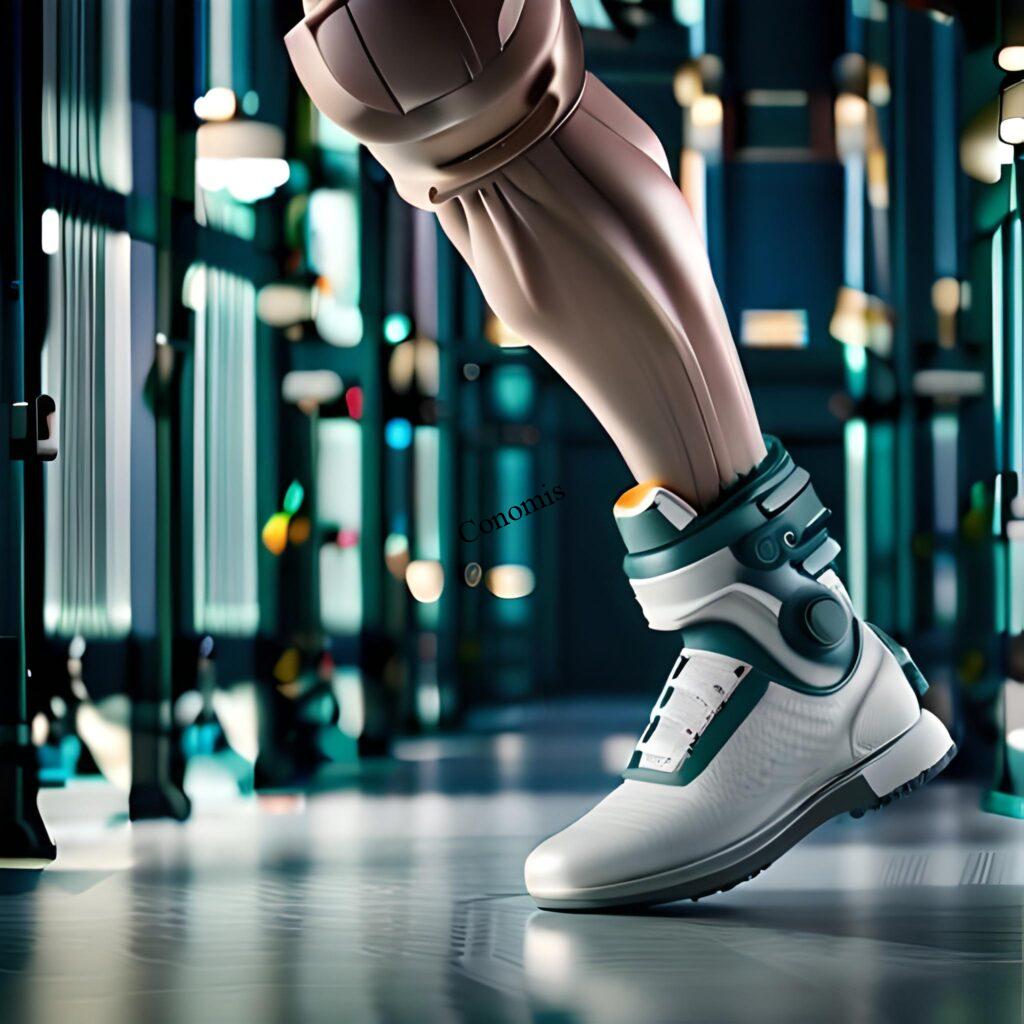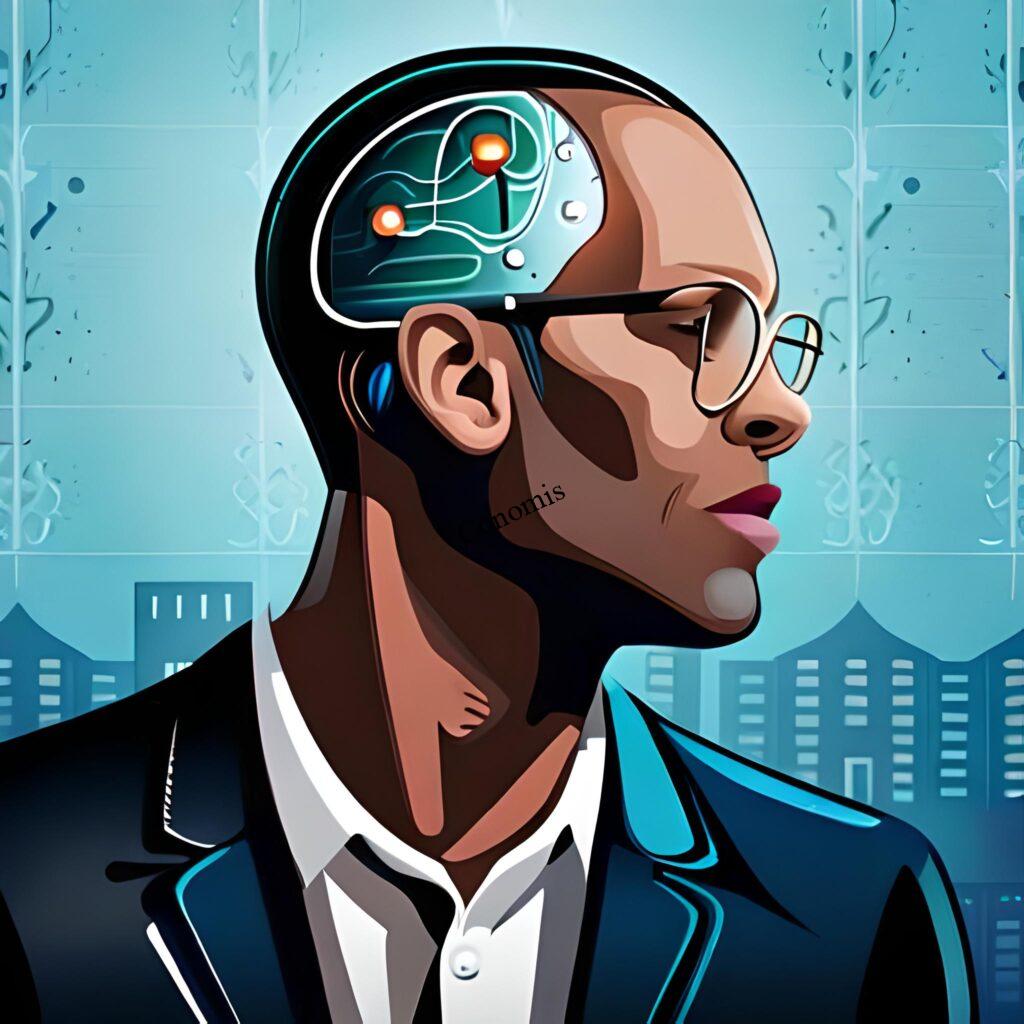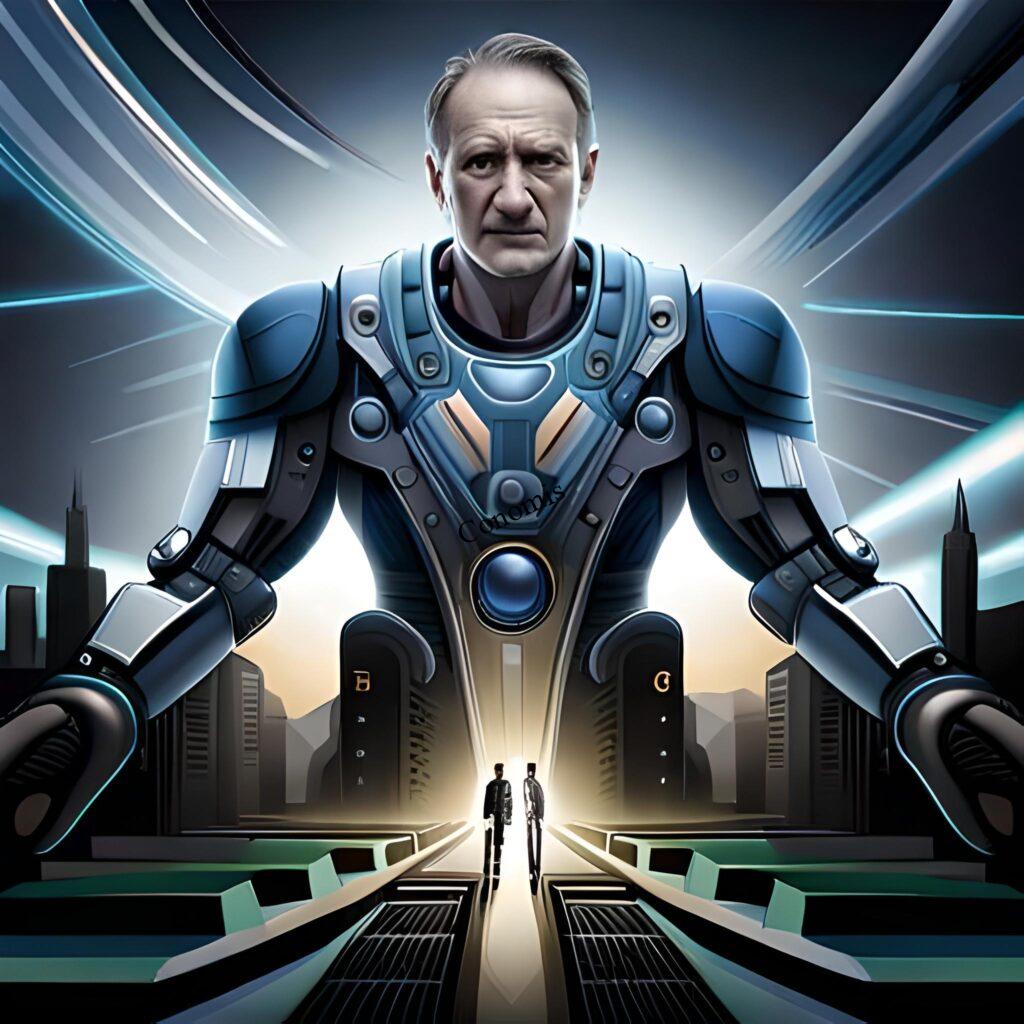Table of Contents
Introduction
In the ever-evolving landscape of technological advancements, the concept of human-machine fusion has captured the imagination of scientists, futurists, and enthusiasts alike. One remarkable embodiment of this idea is the cyborg, a living testament to the possibilities that arise from merging humans and machines. Blurring the boundaries between biology and technology, the cyborg exemplifies the potential for humans to transcend their limitations and embark on a new era of enhanced capabilities.
In this discussion, we shall delve into the fascinating world of the cyborg, exploring its origins, functionalities, ethical considerations, and the broader implications it holds for humanity’s future. By examining this extraordinary fusion of humans and machines, we can gain deeper insights into the frontiers of technological advancement and the complex interplay between man and technology.

Embracing the Future: Half Human, Half Machine
In today’s world, we find ourselves standing at the forefront of an incredible era of technological progress. The once clear distinction between humans and machines is gradually fading away, giving rise to the concept of being “half human, half machine.” This notion encapsulates the fascinating integration of cutting-edge technology with our biological selves, ushering in a new realm of possibilities that were once relegated to the realm of science fiction.
This integration represents a convergence of human ingenuity and technological innovation, where the boundaries that traditionally defined us as separate entities are becoming increasingly blurred. It’s a transformative journey with tremendous potential to revolutionize how we live, work, and interact with the world around us.
Imagine a future where our cognitive abilities are augmented by brain-computer interfaces, allowing us to effortlessly access vast amounts of information or communicate directly with machines. With neural implants, we could enhance memory, learning, and problem-solving capabilities, pushing the limits of human potential to unprecedented heights.
On the physical front, the advent of bionic limbs and exoskeletons has already begun to redefine our understanding of mobility and strength. These remarkable advancements enable individuals with disabilities to regain lost functionalities, granting them newfound independence and the ability to navigate the world on their own terms. Furthermore, these technologies promise to enhance the physical abilities of even the most able-bodied individuals, transcending our inherent limitations and propelling us towards a future where our physical potential knows no bounds.

Bionic Evolution
Prosthetics and exoskeletons represent extraordinary advancements in the field of human-machine fusion, offering individuals the ability to overcome physical limitations and regain their freedom of movement. These revolutionary technologies have the potential to restore lost functionalities, enhance mobility, and empower individuals with newfound strength and independence.
Prosthetic limbs, crafted with precision engineering and state-of-the-art materials, can replicate natural human movement. By seamlessly integrating with the user’s body, they enable individuals who have experienced limb loss or congenital limb differences to regain motor control and perform a wide range of activities. Advanced sensors and actuators within these prosthetics allow them to respond to the user’s muscle signals or neural commands, translating intention into precise action.
Moreover, exoskeletons provide a transformative solution for augmenting physical capabilities. These wearable devices, worn externally, amplify strength and endurance by providing additional support and assistance. By redistributing weight, reducing fatigue, and enhancing stability, exoskeletons have the potential to revolutionize physically demanding industries like manufacturing, construction, and healthcare.
The fusion of biological and mechanical elements in prosthetics and exoskeletons not only restores lost functionalities but also expands the boundaries of human physicality. Advances in robotics, materials science, and bioengineering continuously push the possibilities, enabling increasingly sophisticated designs and capabilities. Sensory feedback systems integrated into prosthetic limbs enable users to regain a sense of touch and proprioception. Furthermore, exoskeletons equipped with advanced joint mechanisms and artificial intelligence algorithms can learn and adapt to the user’s movement patterns, providing personalized assistance and optimizing performance.
The impact of these technologies extends beyond mere functionality. They have the potential to profoundly transform the lives of individuals with physical disabilities, granting them the freedom to engage in activities they may have once deemed unattainable. By restoring physical abilities and fostering enhanced mobility, strength, and independence, prosthetics and exoskeletons play a vital role in boosting self-esteem, mental well-being, and overall quality of life.
As we delve further into the merging of biological and mechanical elements, the boundaries of human physicality will continue to expand. We stand at the precipice of a future where the limitations of the human body may become a thing of the past. The promise of restoring lost functionalities, empowering individuals with enhanced mobility, and pushing the horizons of human physical potential becomes increasingly tangible through the remarkable advancements in prosthetics and exoskeletons.

Synergizing Humans and Machines
The integration of humans and machines in healthcare is poised to spark a revolution that will reshape the landscape of diagnostics, treatment, and overall well-being. Through ground-breaking advancements such as nanobots for targeted drug delivery and smart implants that monitor and regulate bodily functions, the potential for transformation is immense.
Nanobots, minuscule robots engineered at the nanoscale, hold the promise of revolutionizing drug delivery. These tiny machines can navigate through the human body, precisely targeting diseased cells or specific areas requiring treatment. By carrying medication directly to the affected sites, nanobots minimize side effects and maximize therapeutic efficacy. This targeted approach opens up new possibilities for treating diseases such as cancer, where conventional methods often have limitations.
Smart implants represent another remarkable innovation. These implantable devices are equipped with sensors, actuators, and wireless connectivity, enabling real-time monitoring and regulation of bodily functions. They can provide continuous feedback on vital signs, detect anomalies, and even administer therapeutic interventions autonomously. By integrating with our biological systems, smart implants have the potential to revolutionize disease management, personalized medicine, and preventative care.
The benefits of this integration extend beyond treatment to the realm of diagnostics. Imagine a future where wearable biosensors and implantable devices continuously monitor our health, detecting signs of illness or disease at their earliest stages. Machine learning algorithms can analyze the collected data, providing early detection, accurate diagnosis, and personalized treatment plans. This transformative approach has the potential to shift healthcare from a reactive model to a proactive and preventive one, improving outcomes and saving lives.
Moreover, the integration of humans and machines in healthcare also holds promise for enhancing overall well-being. Imagine smart implants that monitor and regulate hormone levels, neurotransmitters, or even brain activity, helping individuals manage conditions such as diabetes, depression, or neurological disorders. These advancements can provide precise control and personalized interventions, optimizing individuals’ health and quality of life.
While the integration of humans and machines revolutionizes healthcare, it also introduces ethical considerations. Issues surrounding data privacy, security, informed consent, and equitable access must be addressed to ensure responsible and equitable implementation. Striking a balance between the benefits and potential risks is paramount as we navigate this transformative frontier.
As the integration of humans and machines continues to evolve, the boundaries of what is possible in healthcare are expanding exponentially. From nanobots delivering targeted therapies to smart implants monitoring and regulating bodily functions, these advancements have the potential to revolutionize diagnostics, treatment, and overall well-being. With responsible development and careful consideration of ethical implications, the future of healthcare holds immense promise for improving lives and transforming the way we approach human well-being.

The Cyborg Revolution: Embracing a Hyper-Connected Healthcare Era
The rise of wearable devices and implanted sensors has ushered in an era of unprecedented interconnectedness with the digital world. These advancements enable us to engage in real-time health monitoring, seamless communication, and instant access to information, fundamentally reshaping the way we interact with our surroundings and fostering a hyper-connected existence.
Wearable devices, such as smartwatches, fitness trackers, and smart clothing, have become ubiquitous companions that constantly collect and analyze data about our physical activities, sleep patterns, and vital signs. With real-time health monitoring at our fingertips, we gain valuable insights into our well-being, allowing for proactive management of our health and the potential for early detection of health issues.
Moreover, these wearable devices serve as powerful communication tools, providing seamless connectivity with others and the digital realm. They enable instant messaging, voice calls, and social media interactions, ensuring that we are constantly connected to our social networks and the wider world. These devices have become an integral part of our lives, enhancing our ability to stay connected and collaborate with others regardless of geographical distance.
Additionally, implanted sensors represent a significant advancement in our interconnectedness. These tiny devices, placed inside the body, can monitor various physiological parameters, such as glucose levels, heart activity, or brain signals. They provide a continuous stream of data, offering valuable insights into our health in real time. This level of connectivity allows for timely interventions and personalized treatments, improving overall health outcomes.
The integration of wearable devices and implanted sensors has revolutionized access to information. With just a few taps on a smartwatch or a voice command to a virtual assistant, we can instantly retrieve a wealth of knowledge, from weather updates and news to directions and medical information. This instant access to information empowers us to make informed decisions, stay up to date, and navigate the world with ease.
As we embrace this hyper-connected existence, it is important to recognize the transformative impact it has on various aspects of our lives. It enables us to proactively manage our health, maintain social connections, and access information with unprecedented convenience. However, we must also be mindful of the potential implications, such as privacy and security concerns, information overload, and the need for digital balance.

Ethical Considerations
As we embark on this brave new world where the integration of humans and machines becomes more pervasive, ethical considerations come to the forefront. We find ourselves faced with important questions regarding how to strike a balance between the benefits derived from this integration and the concerns surrounding privacy, security, and equality.
Privacy is a crucial aspect that demands careful attention. As we become more interconnected with technology, our personal data, ranging from health information to communication patterns, is increasingly vulnerable to breaches. Safeguarding individual privacy and ensuring that data is handled responsibly are paramount. We must establish robust frameworks that protect sensitive information, giving individuals control over their personal data and empowering them to make informed choices regarding its usage.
Security is another vital concern. With the deepening integration of technology into our lives, the risk of cybersecurity threats and unauthorized access to our interconnected systems grows. Safeguarding against hacking attempts, data breaches, and malicious activities becomes imperative. Strengthening cybersecurity measures and fostering a culture of digital safety are essential to maintain trust and ensure the integrity of our interconnected cyborg world.
Equity and equality must also be considered. As technology advances, it is crucial to ensure that the benefits and opportunities it offers are accessible to all, regardless of socioeconomic status, gender, or other characteristics. We must strive for an inclusive future where the integration of human-machine interfaces does not exacerbate existing inequalities but rather serves as a tool for empowerment and enhancement for individuals from diverse backgrounds.
To address these ethical challenges, active engagement and dialogue within society are essential. Open discussions must take place, involving a wide range of stakeholders, including policymakers, researchers, technologists, ethicists, and the public. Together, we can shape policies, regulations, and frameworks that promote responsible and equitable integration of human-machine interfaces. These discussions should aim to anticipate and mitigate potential risks while fostering an environment that encourages innovation, protects individual rights, and upholds ethical standards.
As we navigate the uncharted territory of a future where the line between humanity and technology becomes increasingly blurred, let us approach this journey with caution, curiosity, and a deep commitment to ensuring that the integration of human-machine interfaces enhances and empowers us all. By carefully considering the ethical dimensions and actively participating in the discussions shaping our collective future, we can strive for a world where technology serves as a force for positive transformation, promoting human well-being, and safeguarding our shared values.
Conclusion
The integration of wearable devices and implanted sensors has propelled us into an era of unparalleled interconnectedness with the digital world. This transformational shift empowers us with real-time health monitoring, seamless communication, and instant access to information, revolutionizing our interactions with the environment. We can proactively manage our well-being, stay connected with others regardless of distance, and effortlessly access a wealth of knowledge.
However, as we embrace this hyper-connected existence, we must navigate potential challenges such as privacy concerns and information overload. Striking a balance between our connected lifestyles and our overall well-being is key. Let us seize the opportunities that arise from these advancements while remaining mindful of their implications, ensuring that we harness the power of interconnected cyborg technologies to enhance our lives and foster a healthier, more connected future.

FAQs (Frequently Asked Questions)
1. Can a person become a cyborg?
Yes, with advancements in technology, it is possible for a person to become a cyborg by integrating technological devices or implants with their biological self. This integration can enhance physical and cognitive abilities, leading to a new era of human-machine fusion.
2. What are the benefits of prosthetic limbs and exoskeletons?
Prosthetic limbs and exoskeletons offer numerous benefits. Prosthetic limbs can restore lost functionalities, allowing individuals with limb loss or limb differences to regain motor control and perform daily activities. Exoskeletons enhance physical capabilities, providing support and assistance, which is particularly useful in physically demanding industries. Both technologies can significantly improve quality of life and independence.
3. How do nanobots revolutionize drug delivery?
Nanobots are tiny robots engineered at the nanoscale that can navigate through the human body. They can precisely target diseased cells or specific areas requiring treatment, minimizing side effects and maximizing therapeutic efficacy. Nanobots hold great promise in treating diseases like cancer, where targeted therapies are crucial for effective treatment.
4. What are the ethical considerations associated with human-machine integration?
Privacy, security, and equity are important ethical considerations in human-machine integration. Safeguarding personal data, strengthening cybersecurity measures, and ensuring equitable access to technologies are crucial. Ethical discussions involving various stakeholders are necessary to shape responsible and equitable integration frameworks.
5. How does the integration of humans and machines impact healthcare?
The integration of humans and machines in healthcare has the potential to revolutionize diagnostics, treatment, and overall well-being. Technologies like smart implants and wearable devices enable real-time monitoring, targeted drug delivery, and personalized treatments. They can shift healthcare from a reactive to a proactive and preventive approach, improving outcomes and empowering individuals to manage their health effectively.
Resources You Can Consider
CYBORGS-THE-FUTURE-MAN-KIND.pdf (ijser.org)
Cyborg – an overview | ScienceDirect Topics
The World’s Most Famous Real-Life Cyborgs (medicalfuturist.com)
Conomis Thoughts – Unleashing the Unimaginable: Transforming the World Beyond Limits
Conomis Thoughts
![]() Copyright 2023 CONOMIS
Copyright 2023 CONOMIS
